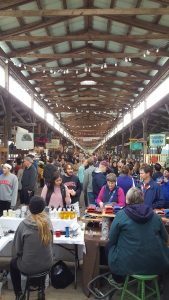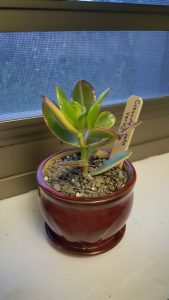In this discussion of the “modern” and “primitive”, modern was used in the sense of “modernist” – as in the cultural movement from the late 1800s to the early 1900s. We watched a video of the Tiller Girls, and we looked at a painting of a railroad crossing the ocean. We identified characteristics of “modernism” as uniformity, linearity, patterns, and order. Progress, conquering the natural, expanding. We then looked at how modernism tends to treat “primitivism” by way of colonial attitudes and endless collecting and categorizing of “primitive” artifacts, of people, and of cultures. However, some of the trends in current American culture seem to be quite different from those of the early 1900s. Progress remains important, but for instance we seem to value individualism and customizable experiences as well as returning to an idea of the natural. I would be interested in looking at how the intersection of the “modernist” and the “primitive” compares to the intersection of the “current” and the “primitive”.
We then discussed portrayals of and attitudes towards the “primitive” in modern works. One topic we addressed by way of Josephine Baker’s “Banana Dance” and the cabaret scene Nella Larson’s novel Quicksand was the idea of performing an image belonging to “your” people or participating in a culture that is yours (either personally or ancestrally), versus performing a stereotype.
Though not in the same contexts of black identity or African colonial attitudes, this is an idea that I run into a lot as a second generation American of varied ancestry. I want, on some level, to participate in my cultural heritage, but I don’t feel as though I can do that properly because I’m so far removed from it. The things that I know about “my” cultures are really no more detailed or nuanced than what my American cultural knowledge tells me – and those things tend to be vastly oversimplified at best and straight up stereotypes at worst.
For instance, the fragments of Filipino culture that I remember from when I was a kid are very few and very hazy. I remember learning a dance with castanets, I remember a song about planting rice, I remember pancit and some kind of caramel candy. I am quite confident that if I tried to recreate any of those things, the result would be at least a little offensive to actual Filipino people. (Honestly, I think the “planting rice” thing might have been a joke, but I don’t know…) When I was in middle school, my (white) mother insisted that I learn Tagalog because “it’s important not to lose things like that”. She bought me a Rosetta Stone course, which I practiced every day because I actually rather liked the idea of forming a connection with my family’s past, and particularly with my grandmother. A few months later we learned that my grandmother’s mother tongue wasn’t Tagalog at all, but another regional language.
This is an incredibly common theme that I’ve seen among my friends, many of whom are two or three generations removed from a non-US heritage. We cling to things like cookie recipes and individual words of a language and meticulous calculation of fractions of ethnicities. We proudly claim to be Polish, Irish, Brazilian, Japanese, Greek… And then we try to go back and learn the dances and foods and languages that we think must have been important to our families. We don’t have much personal connection to that history, though, so I at least am suspicious that we make our decisions about what we learn and how we portray it unfortunately based largely on stereotypes, simply because we don’t know any better. Which would then only reinforce stereotypes. I don’t feel like I have the right to portray or to claim any of my heritages, and in fact it seems like it might be detrimental to more authentic communities for me to try to do so. But what’s the alternative? To sever ties with family history, and completely erase any semblance of inherited cultural identity? I don’t know.


